
How to install an amplifier in a car
Content
Amplifier in car
For many drivers, one of the most important options for a car’s comfort system is loud and high-quality sound. Often, novice motorists, buying a new radioare disappointed in its power, although torn speakers are painted on the package. Some try to solve the problem by acquiring more powerful speakers, but the volume becomes even lower.
In fact, the reason is that the output power of the head unit is not enough to make the speakers in the car sound louder. To solve the problem, an amplifier is connected to the audio system. We will figure out how it works, what they are, and also how to connect it correctly.
Technical specifications
In addition to the price difference, car amplifiers differ from each other in many parameters. These are the main criteria for choosing car amplifiers.
By the number of channels:
- 1-channel. This is a monoblock, the simplest type of amplifier. It is usually used to connect a subwoofer. There are two types of monoblocks. The first is AB. This is a low-power modification that is paired with a single-ohm subwoofer. The advantage of such a model is that the sound is powerful enough, but at the same time a minimum of battery life is used. The second type is class D. It can already work with amplifiers from one to four ohms.
- 2-channel. This modification is used to connect one passive type subwoofer (supports a load of no more than two ohms) or two powerful speakers. This amplifier makes it possible to smoothly increase the low frequencies.
- 3-channel. This modification is rare. In fact, this is the same two-channel amplifier, only this model allows you to connect one mono and two stereos.
- 4-channel. More common in practice. In fact, these are two two-channel amplifiers, assembled into one body. The main purpose of this modification is to change the power level on the front and separately on the rear speakers. The power of such amplifiers is up to 100W per channel. The car owner can connect 4 speakers or, using the bridge method, two subwoofers.
- 5-channel. As logic suggests, this modification is used to connect four powerful speakers and one subwoofer (via a mono channel).
- 6-channel. It is more expensive than its counterparts due to the wide variety of acoustics connection options. Some connect 6 speakers. Others - 4 speakers and a bridged subwoofer. Someone needs this amplifier to connect three subwoofers (when bridged).
By efficiency and distortion of the sound signal:
- A-class. It has minimal distortion of the audio signal and also produces the best sound quality. Basically, premium amplifier models correspond to this class. The only drawback is that they have low efficiency (maximum 25 percent), and also lose signal power. Due to these disadvantages and high cost, this class is rarely found on the market.
- B-class. As for the level of distortion, it is slightly lower, but the power of such amplifiers is more efficient. Few music lovers opt for such amplifiers due to poor sound purity.
- AV class. It is found in audio systems much more often, since such amplifiers give out average sound quality, sufficient signal strength, low distortion, and the efficiency is at the level of 50 percent. Usually they are purchased to connect a subwoofer, the maximum power of which is 600W. Before buying, it is important to consider that such a modification will have large dimensions.
- D-class. These amps work with digital signals. Their feature is their compact size as well as high power. At the same time, the level of signal distortion is low, but the sound quality suffers. The maximum efficiency for such modifications is 98 percent.
And here are some more characteristics to consider when choosing a new amplifier:
- Power. The operating instructions for the device may indicate the peak or maximum power as well as the nominal power. In the first case, this data does not affect the sound quality in any way. Nevertheless, the emphasis is on this parameter in order to attract more buyers. Better to focus on the rated power.
- Signal to Noise Ratio (S / N Ratio). The amplifier generates a certain amount of background noise during operation. This parameter shows how much the reproduced signal is stronger than the background noise from the amplifier. Class D car amplifiers have a ratio of 60 to 80 dB. Class AB is characterized by a level of 90-100. The ideal ratio is 110dB.
- THD (Harmonic Distortion). This is the level of distortion that the amplifier creates. This parameter affects the audio output. The higher the ratio, the lower the sound quality. The limit for this parameter for class D amplifiers is one percent. Class AB models have a ratio of less than 0.1%
- Damping Factor. Damping Factor is a coefficient that indicates the interaction between the amp and the speakers. During operation, the speakers emit vibrations, which negatively affects the purity of the sound. The amplifier accelerates the decay of these oscillations. The higher the setting, the clearer the sound will be. For budget amplifiers, a coefficient from 200 to 300 is characteristic, the middle class have a coefficient above 500, and premium models - above 1000. Some expensive car amplifiers have a level of this coefficient up to 4000.
- Hi-Level Input This is an additional parameter that allows you to connect to radios that are not equipped with a line-out. Using this input increases distortion, but it also allows you to connect using standard speaker cables instead of much more expensive interconnects.
- Low-pass filter (LPF). This filter must be fitted to the amplifier to which the subwoofer is connected. The fact is that it is capable of transmitting a signal with a frequency lower than at the cutoff. Its value should be 80-150Hz. This filter allows you to direct bass sound to the appropriate speaker (subwoofer).
- High-pass filter (HPF). Front and rear speakers are connected to this amplifier. This filter only passes the signal with a frequency higher than the cutoff. This parameter in acoustics with a subwoofer should be from 80 to 150Hz, and in the analogue only with speakers - from 50 to 60Hz. This filter protects high-frequency speakers from mechanical damage by a low-frequency signal - it does not go to them.
- Bridge Mode function. This feature allows you to greatly increase the power rating of an amp by connecting two channels into one. This mode is used in speakers equipped with a subwoofer. In this case, it is necessary to take into account the parameter of resistance to the load. Compared to the load in the channel, this parameter is much higher with a bridged connection, therefore, before connecting the devices, it is necessary to take into account the ratio of the loads of the amplifier and the subwoofer.
Why an amplifier is needed
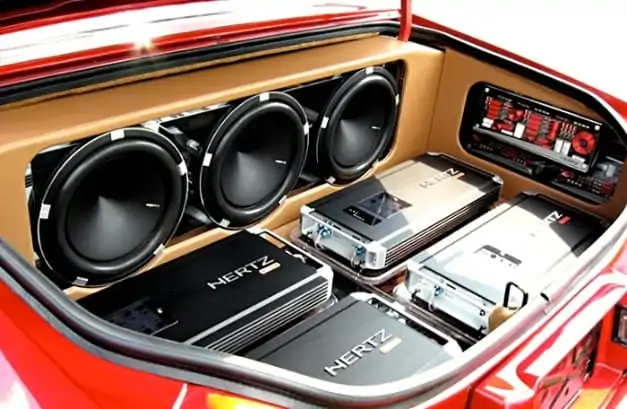
The name of the device speaks for itself. However, it not only makes the sound in the speakers louder. It allows you to transmit the signal better, so that when playing through this device you can hear the difference in the fine settings of the equalizer.
For lovers of bass music, a subwoofer can be connected to the device. And if you also connect a crossover to the audio system, you can enjoy the sound at all frequencies and not burn speakers of different powers. An additional capacitor in the audio circuitry will not allow the bass to “sink” at peak load on a separate channel.
All of these nodes are important for transmitting high-quality sound. But they will not work properly unless a stronger signal is sent to them. Just this function is performed by the auto amplifier.
How does the amplifier work?
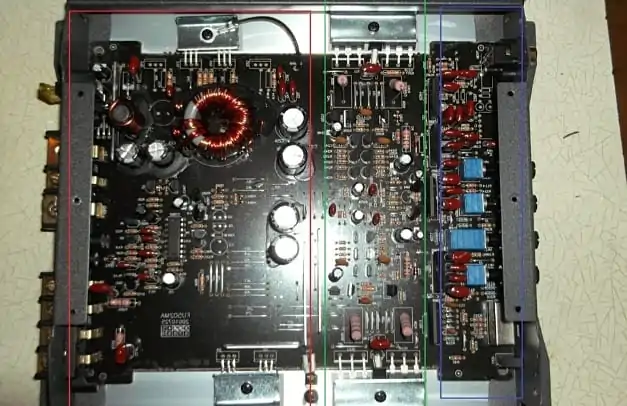
All car amplifiers consist of three nodes.
- Input. It receives an audio signal from a tape recorder. Each amplifier is limited not only by the output power, but also by the strength of the input signal. If it is higher than the sensitivity of the input node, then the music will be distorted in the columns. Therefore, when choosing a device, it is important to check the compliance of the signals at the output of the radio and at the entrance to the amplifier - whether they are in the same range.
- Power Supply. This unit is equipped with a transformer to increase the voltage coming from the battery. Since the audio signal is variable, the voltage in the power supply system of the speakers should also be positive and negative. The greater the difference between these indicators, the higher the power of the amplifier. Here is an example. If the power supply produces 50V (+ 25V and -25V), then when using speakers with a resistance of 4Ohm, the maximum power of the amplifier will be 625W (divide the voltage square 2500V by 4Ohm). So, the greater the voltage difference of the power supply, the more powerful the amplifier.
- Output. In this node, a modified audio signal is generated and fed to the speakers. It is equipped with powerful transistors that turn on and off depending on the signal from the radio.
So, this device works according to the following principle. A signal with a small amplitude is received from the head unit of the audio system. The power supply increases it to the required parameter, and an amplified copy of this signal is created at the output stage.
More information about the principle of operation of the auto amplifier is described in the following video:
Types of Amplifiers
All modifications of amplifying devices are divided into two types:
- analog - receive a signal in the form of alternating current and voltage, which varies depending on the sound frequency, then amplify it before going to the speakers;
- digital - work exclusively with signals in digital format (ones and zeros, or pulses in the "eat / not" format), increase their amplitude, and then convert them to analog form.
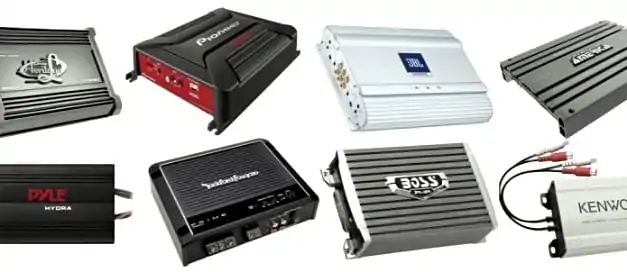

Devices of the first type transmit sound unchanged. In terms of clarity, only live performance can be better than analog. However, the recording itself should be perfect.
The second type of device slightly distorts the original recording, clearing it of minor noise.
The difference between the two types of amplifiers can be felt if you connect them to a turntable. The music lover will choose the first type of amplifiers, because the sound in the speakers in this case will be more natural (with a characteristic, barely perceptible, creak of a needle). However, when playing music from digital media (disk, flash drive, memory card), both types of amplifiers work on equal terms.
The difference in sound can be heard in the following video experiment (listen with headphones):


Watch this video on YouTube
Car amplifiers are also distinguished by the number of channels:
- single-channel - are used to connect a subwoofer with a maximum resistance of up to 2 ohms, often have low frequency adjustment;
- two-channel - can be used to connect two speakers or one subwoofer with a resistance of more than 2 ohms;
- four-channel - replaced the three-channel because of their impracticality, this type of amplifier is the most common, because you can connect either four speakers, or two speakers and one subwoofer;
- five-channel - four speakers and one woofer are connected to them;
- six-channel - are used only if the subwoofer has a greater resistance than the maximum allowable value for the previous modification.
How to Install
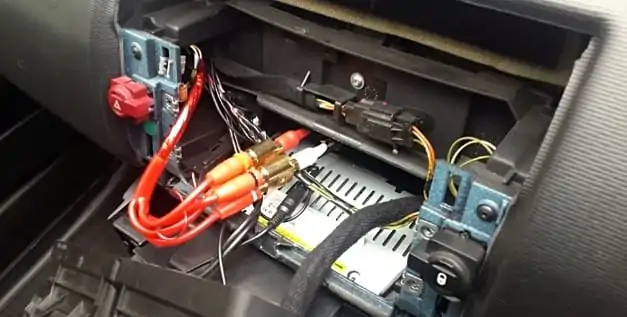

Before installing the device, it is important to familiarize yourself with some of the nuances on which the safety of the car and the effectiveness of the audio system depend.
Choosing an installation site
Several factors depend on the choice of installation location.
- During operation, the amplifier heats up very much, so it is important to choose a place where the best air circulation occurs. It cannot be mounted on its side, upside down or under the skin. So the device will overheat and at best will stop working. The worst case scenario is a fire.
- The farther it is installed from the radio, the greater the resistance. Because of this, the speakers will sound a little quieter.
- Wiring must be laid under the trim, so it is important to make the right measurements taking into account the turns.
- Do not mount it on the subwoofer cabinet, as it does not tolerate large vibrations.
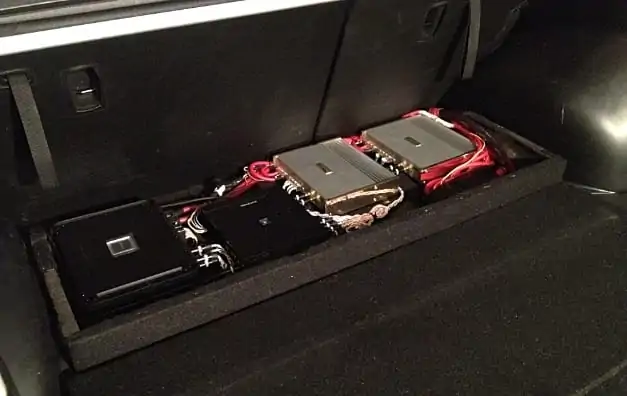

Where is the best place to install this element of the audio system? Here are four more common locations.
- In front of the passenger compartment. It depends on the car model. If there is free space under the torpedo and this will not interfere with the passenger. This place is considered optimal, since maximum sound purity is achieved (short signal cable length).
- Under the front passenger seat. There is good air circulation (cool air always creeps down) and easy access to the device. In the case of a large space under the seat, there is a possibility that passengers on the back sofa will kick the device with their feet.
- Rear shelf. A good option for sedan and coupe, because unlike hatchbacks, it is motionless.
- In the trunk. This will be especially practical if two amplifiers are connected (one in the cabin and the other in the trunk).
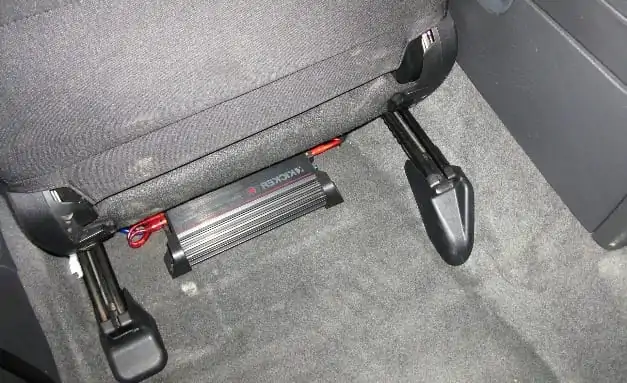

Wires for connection
Some motorists mistakenly believe that ordinary thin wires that come with speakers are enough for the audio system. However, a special cable is required to power the amplifier.
For example, a driver bought a device with a power of 200 watts. To this indicator, it is necessary to add 30 percent (losses with low efficiency). As a result, the power consumption of the amplifier will be 260 watts. The cross section of the power wire is calculated by the following formula: power is divided by voltage (260/12). In this case, the cable must withstand a current of 21,6A.
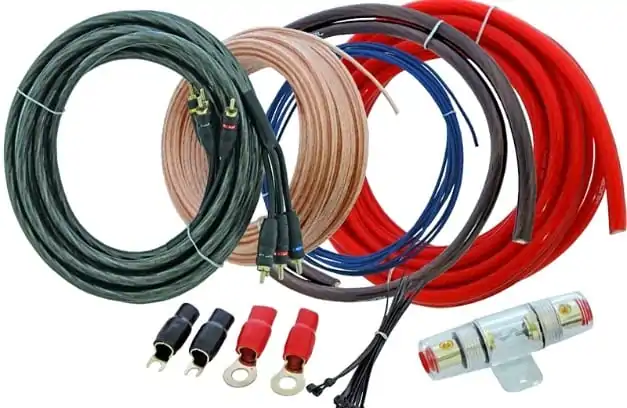

Auto electricians are advised to purchase wires with a small margin of cross-section so that their insulation does not melt due to heating. After such calculations, many are surprised how thick the wiring for the amplifier will turn out.
Fuse
The fuse must be present in any electrical circuit, especially if a large amperage current is supplied through it. This is a fusible element that breaks the circuit with increased heat. It will protect the interior of the vehicle from fire due to a short circuit.


The fuse for such systems often looks like a glass barrel, inside of which a fusible metal core is placed. Such modifications have a significant drawback. The contacts on them are oxidized, due to which the power to the device disappears.
More expensive fuses are equipped with bolt clamps securing the fusible plate. The contact in this connection does not disappear from constant vibrations during the operation of the motor.


This protective element must be installed as close to the battery as possible - within 30 centimeters. Do not use modifications that far exceed the wire throughput. For example, if the cable is able to withstand a voltage of 30A, the fuse in this case should not exceed a value of 50A.
Interconnect cable
This is not the same as a power cable. The interconnect wire connects the audio outputs of the radio and amp. The main task of this element is to transmit an audio signal from the tape recorder to the input node of the amplifier without loss of quality.
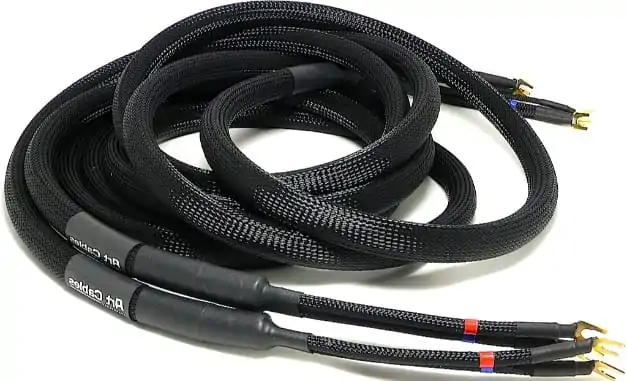

Such a cable should always have strong insulation with full shielding and a thick central core. It should be purchased separately, since often a budget option is included with the device.
Amplifier connection diagrams
Before you buy an amplifier, you need to decide on what scheme the speakers will be connected through the amplifier. There are three connection options:
- Consistent. This method is suitable for speakers equipped with full-range and low-frequency speakers connected to an amplifier. Thanks to this, the four-channel system will distribute the signal power to the sides;
- Parallel. This method allows you to connect high impedance speakers to a device that is not designed for high load impedance. This method also allows you to connect high-frequency speakers and wideband modifications if the serial connection did not give uniform volume on all speakers (one of them sounds too quiet or loud);
- Serial-parallel. This design is used to create more complex speaker systems. It is usually used in cases where connecting several speakers to a two-channel amplifier did not give the desired effect.
Next, you need to determine how the amplifier will be connected to the radio. This can be done using speaker cables or line outputs.
Consider the features of each of the above schemes for connecting speakers to an amplifier.
Consistent
In this case, the subwoofer is connected in series with the left or right speaker to a two-channel amplifier. If a 4-channel amplifier is installed in the car, then the subwoofer is connected by the bridge method or into the channel gap on the left or right.


For convenience, the positive terminal is made wider than the negative one. The connection is performed as follows. The negative terminal of the wideband rear speaker is connected to the positive terminal of the subwoofer. Acoustic wires from the amplifier are connected to the free terminals of the speaker and subwoofer.
Before using the loudspeaker, check that the poles are correct. For this, a 1.5-volt battery is connected to the wires. If the speaker membranes move in one direction, then the polarity is correct. Otherwise, contacts are swapped.
The impedance on all speakers should be the same. Otherwise, the individual speaker will sound louder or quieter.
Parallel
In this case, tweeters or a subwoofer are connected to the main speakers in parallel. Since the tweeter membrane is not visible, the polarity should be checked by ear. For any unnatural sound, the wires are reversed.


It is more practical to connect the wires not two by two in one socket, but to use a branched speaker cable. Wires from the speakers are screwed to one of its ends, and so that the junction does not oxidize, it must be insulated with electrical tape or heat-shrinkable cambric.
Serial-parallel
This connection method allows you to provide high quality sound. This effect is achieved by combining the speakers, as well as by matching their impedance with the same indicator at the amplifier output.
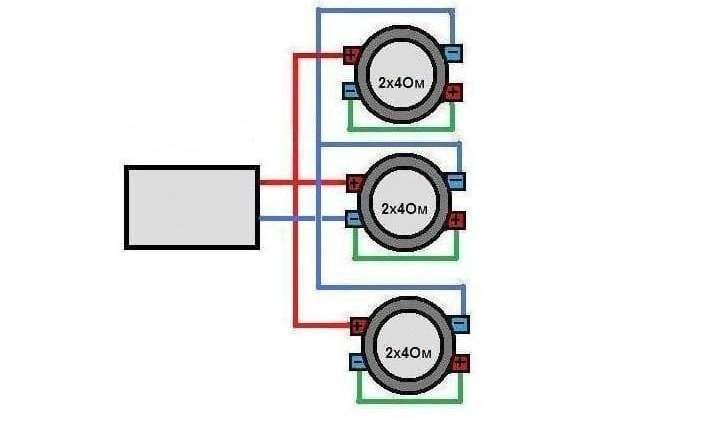

In this case, there are many variations of speaker connections. For example, a subwoofer and a full-range speaker are connected in series. In parallel with the broadband speaker, a twitter is still connected.
How to connect with your own hands
To connect the amplifier you do not need to have deep electrical knowledge. It is enough to follow the instructions that come with the device. Regardless of the modification of the device, the connection is made as follows.
1. At first, the amplifier housing is fixed in the selected place of the car (where it will not overheat).
2. To prevent accidental rupture of the trunk wiring should be laid under the skin of the cabin. How to do this is determined by the owner of the car. However, when laying an interblock cable, it is important to remember: the location in close proximity to the power wiring of the machine will lead to distortion of the sound signal due to electromagnetic radiation.


3. The power cable can be laid along the main wiring of the vehicle. At the same time, it is important to fix it so that it does not fall under the moving elements of the machine - the steering wheel, pedals or skids (this often happens if the work is performed by a specialist). In places where the cable passes through the body wall, plastic sleeves must be used. This will prevent wire fraying. For greater safety, the line must be laid using tubing (a corrugated tube made of non-flammable material).
4. The negative wire (black) must be fixed to the car body. At the same time, self-tapping screws and twists cannot be used - only bolts with nuts, and the contact point must be cleaned. The terminal on the amplifier labeled GND is ground, or minus. Remote terminal - a place for connecting the control wire from the radio (can be powered from the antenna connector). It gives a signal for activation when the recorder is turned on. More often in the kit for this purpose there is a blue wire or with a white stripe.
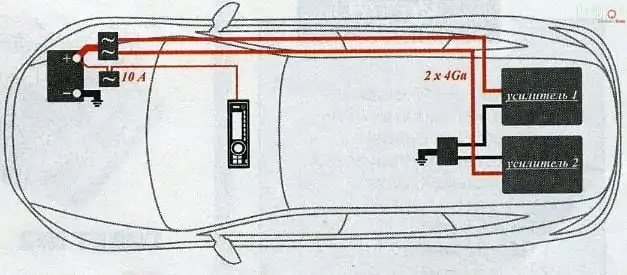

5. The signal cable is connected to the Line-out (radio) and Line-in (amplifier) sockets. In many models of these sockets there can be several: front (Front), rear (Rear), subwoofer (Sub).
6. The speakers will connect in accordance with their operating instructions.
7. If the radio is two-channel, and the amplifying device is four-channel? In this case, you should use the interconnect wire with a splitter. There are two “tulips” on one side, and four on the other.
Connecting an amplifier to a radio without tulips
Budget models of car radios have conventional connectors with clamps. In this case, you will need to purchase a special adapter to connect the line cable. On the one hand, it has ordinary wires, and on the other, “mothers of tulips”.
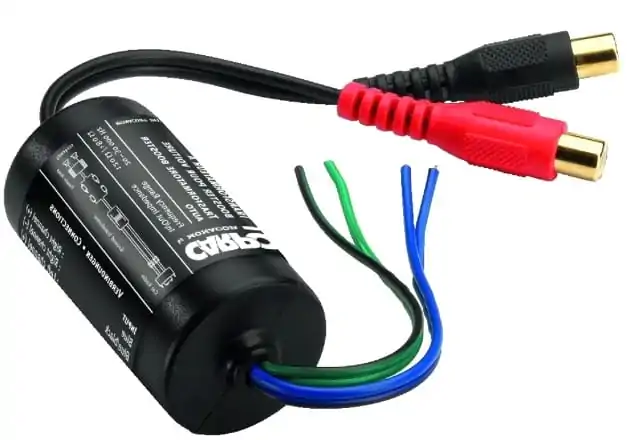

So that the wires between the adapter and the radio do not break due to the constant swaying of the device, you can wrap it with foam rubber (it will not rustle during the ride) and fix it on the body of the head unit.
How to connect two or more amplifiers
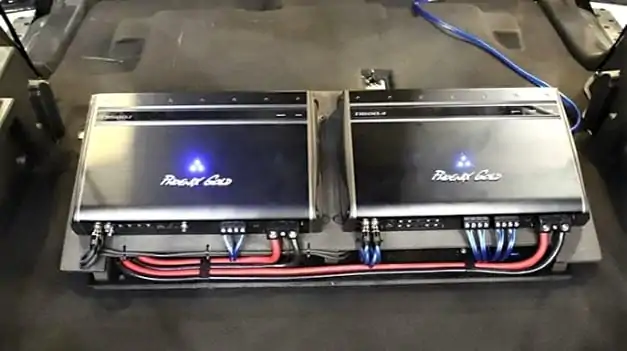

When connecting a second amplifying device, additional factors must be considered.
- The presence of a powerful capacitor (at least 1F) is required. It is installed by parallel connection with the battery.
- The signal cable connection depends on the modifications of the amplifiers themselves. The instructions will indicate this. Often, a crossover (frequency distribution microcontroller) is used for this.
About why a crossover is needed and how to configure it, is described in the following review:


Watch this video on YouTube
Connecting a two-channel and four-channel amplifier
To connect the amplifier, in addition to the device itself, you will also need special wiring. As already mentioned, signal wires must have a high-quality screen so that noise does not form in the sound. Power cables must withstand high voltages.
Two-channel and four-channel analogs have similar connection methods, depending on what effect you want to achieve.
Two channel amplifier
Two-channel models are popular with most car audio enthusiasts. In budget acoustics, such modifications are used as an amplifier for front speakers or for connecting a subwoofer. This is how such an amplifier will be connected in both cases:
- Frontal acoustics. In this case, the amplifier will be used in stereo. In this case, the signal cable can be connected at a high level (if the radio tape recorder does not have line outputs, then the amplifier has a high level input port for this) or at a low level (when the radio tape recorder is equipped with linear outputs - ordinary jacks of the "tulip" type). When connecting, it is important not to confuse polarity and channels. You should also use an HPF or low pass filter. In this case, the load on each channel can be 2 ohms.

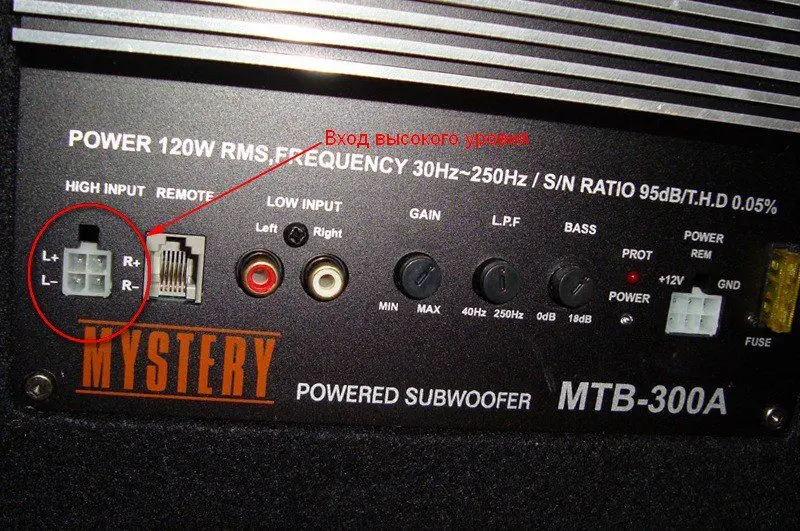
- Subwoofer. In this case, the amplifier is connected in the "bridge" mode. This scheme is available for most 4-channel models. The scheme is as follows. The plus of one amplifier channel and the minus of the other are taken and connected to the subwoofer. It is worth noting that most models operate at a minimum load in bridge mode from 50 Ohm. In such a connection scheme, you will need an LPF filter. It cuts off signals with a frequency of 100-XNUMXHz coming from the subwoofer.
Four channel amplifier
Connecting such an amplifier has an almost identical circuit. The only difference is the ability to connect either four speakers or two speakers and a subwoofer. You need to power the device using a thick cable.
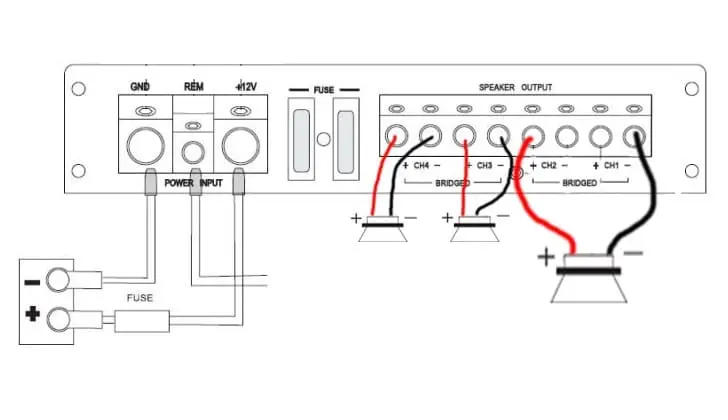

In most cases, along with the amplifier, the kit also includes instructions for connecting in different ways. This applies to both stereo mode (speakers are connected in accordance with the polarity indicated on the diagram in the instructions) and mono (2 speakers and a sub).
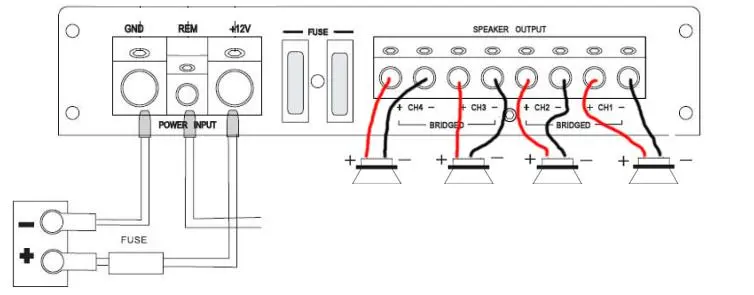

To connect a subwoofer, you must follow the speaker manufacturer's instructions carefully. The connection diagram is identical to that of connecting a subwoofer to a two-channel amplifier - two channels are combined into one bridge. Only in the four-channel, two speakers are also connected.
How to connect a five-channel amplifier
In this version, the device is connected to the battery in the same way as any other amplifier. The connection to the radio tape recorder is also no different. The only difference is in the speaker connections.
As we said, in the five-channel versions, four channels are designed to feed the signal to the speakers. The subwoofer sits on the fifth channel. Since the tweeter requires more power, the lion's share of the amplifier's power will be used to drive the sub's membrane.
The disadvantage of these amplifiers is that the loud bass takes almost all the power from the tweeters. For this reason, this modification is purchased by car owners who value the beauty of the melody and the depth of all frequencies, and not the volume of the music. Tweets can be placed on the same pins as the front speakers (parallel connection).
How to set up an amplifier
The fine tuning of the amplifier is another factor that determines the sound quality of music in the car. If there is no experience in carrying out such a setting, it is better to seek the help of a specialist for the first time. If the setting is incorrect, you can burn the channel or damage the speaker membranes (the twitter tried to reproduce the bass, and it broke).
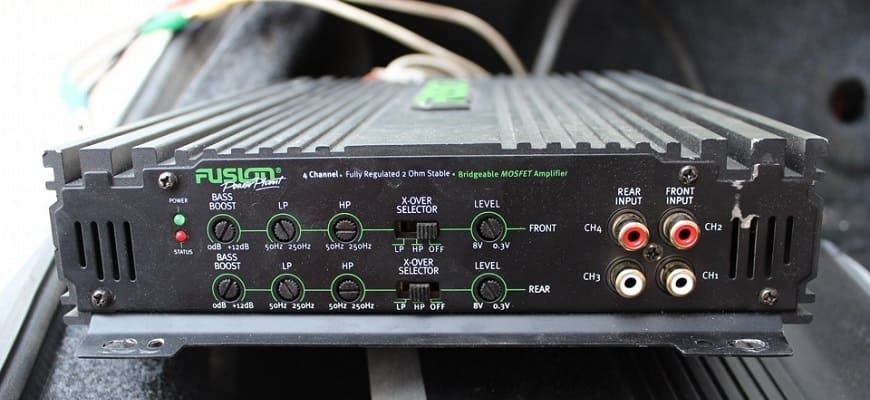

Here are the parameters you need to set on the amplifier for specific types of loudspeakers:
- HPF or High Pass Filter. The subwoofer amplifier should be set around 20Hz. On the midrange drivers, the HPF is set at around 80Hz. This will cut off low frequencies that the speaker cannot transmit. If tweeters are separately connected to the amplifier, then this parameter for them is set at a maximum of 5000Hz (it depends on their model).
- LPF or low pass filter. On the subwoofer amplifier, this filter is set between 50 and 80Hz. For midrange options, the cutoff should be at a maximum of 1600Hz. For twitters, you can make a limitation of 20Hz, but this is not critical.
- Gain or sensitivity of the input from the radio. This is a parameter that allows you to match the amplifier and the radio tape recorder. Sensitivity is measured in volts. Increasing this setting increases the volume of the speakers. When adjusting this parameter on subwoofer speakers, it is necessary to turn off the equalizer and other options that regulate the bass. We'll pay more attention to Gein's tuning a little later.
- Subsonic is a separate low-pass filter that cuts off infrasound. It can be found on subwoofer amplifiers (monoblocs). By default, this parameter should be set at up to 25Hz.
- Bassboost. This is an automatic control that at a specific frequency (usually in the range of 40-45Hz) increases the volume of the speaker. If a beginner is tuning the amplifier, then it is better not to turn this regulator at all, since there is a high probability of burning the sub.
- X-over. This is a switch for different filters. It is available in models that do not have separate settings for each filter. HPF - high frequency signals are cut off, LPF - low frequency signals are cut off, Full - filters are not used.
- Phase - This setting allows you to change the phases of the speaker. If you have no experience in the settings, it is better not to touch this switch.
- Master / Slave. This switch allows you to bridged speakers. The first position concerns the connection from the "tulips" (RCA) coming from the radio, and the second is set if a monoblock is connected.
Let's talk a little about how to properly adjust the Gain parameter. There are two methods. The first will require the help of a partner. First, on the radio, the music volume is set to the minimum value. Then a composition is included, which often sounds in the car, and it is already known how it should sound.
The volume of the device is gradually set to approximately three-quarters of the maximum value. If the sound begins to distort earlier, then you should stop increasing the volume, and turn down the adjustment by a couple of divisions.
Next, the amplifier is set up. The assistant gradually increases the gain control on the rear of the amplifier until new distortion appears. As soon as the music starts to sound unnatural, you should stop and turn down the adjustment by about 10 percent.
The second method will require downloading special sounds designed to adjust the various parameters of the amplifier. These sounds are called sinuses. To tune the subwoofer, the frequency is set to 40 or 50 (if the speaker is in a closed box). If midbass is set, then the basis should be a parameter of about 315Hz.
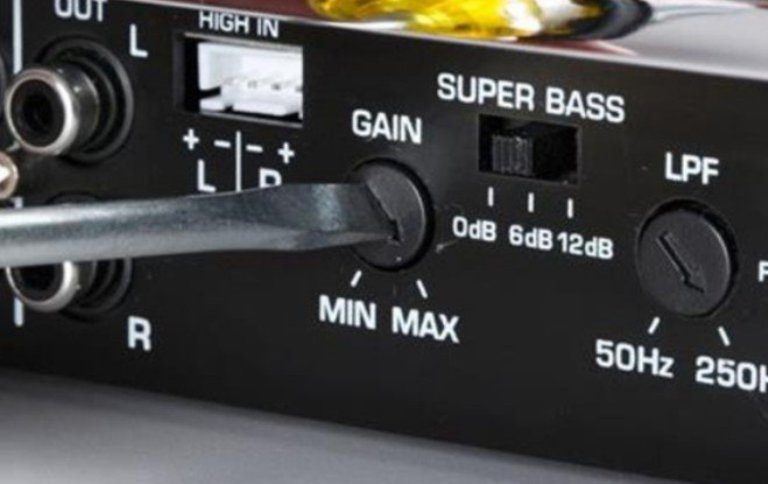

Next, the same procedure is performed as in the previous method. The radio tape recorder is set to a minimum, the sine is turned on (the tone sound that is heard at a specific frequency, if it changes, it will immediately become audible), and gradually the volume is added until distortions appear. This will be the maximum sound on the radio.
Next, the amplifier is tuned in the same way as in the first method. Gain is added until distortion occurs, after which the control is moved 10 percent downward.
Amplifier selection criteria
Any equipment, especially one that allows you to extract pure sound from digital media, has its own characteristics. Since the radio tape recorder, speakers, amplifier and other electronic equipment work in one bundle, the new amplifier must match other elements of the audio system. Here are the indicators you need to focus on when choosing a new amplifier:
- Power per channel;
- Rear speaker and subwoofer rated power. This parameter should be slightly higher than the power of one channel in the amplifier. Thanks to this, it will be possible to achieve a cleaner sound and the speakers will not "choke" from overload;
- Load resistance. The amplifier is loaded with acoustic equipment. A prerequisite should be the match of resistance on the speakers and on the amplifier. For example, if the speakers have an impedance of 4 ohms, then the amplifier must have the same value. It is normal for the speaker to exceed the impedance of the amplifier. If this difference is different (the amplifier has more than the speakers), then there is a high probability that both the amplifier and the acoustics will break;
- Car amplifier frequencies should range from 20 hertz to 20 kilohertz. If this spread is greater, then it is even better, only this will affect the cost of equipment;
- The presence of a crossover. When buying a modern amplifier, this factor should also be taken into account. In many models, it is standard. This element allows you to change modes and operate the amplifier in different frequency ranges;
- The presence of a linear transistor output, if there is a need to connect a second amplifier.
How to choose an amplifier if a subwoofer is installed
There can be many configurations of the car speaker system. The selection of the amplifier is carried out in accordance with the parameters described above. But if a subwoofer is already installed in the car, then in addition to these parameters, you need to choose a two-channel model. By the way, when choosing a device, you need to make sure that it supports bridging. The overwhelming majority of such models are on the auto accessories market.
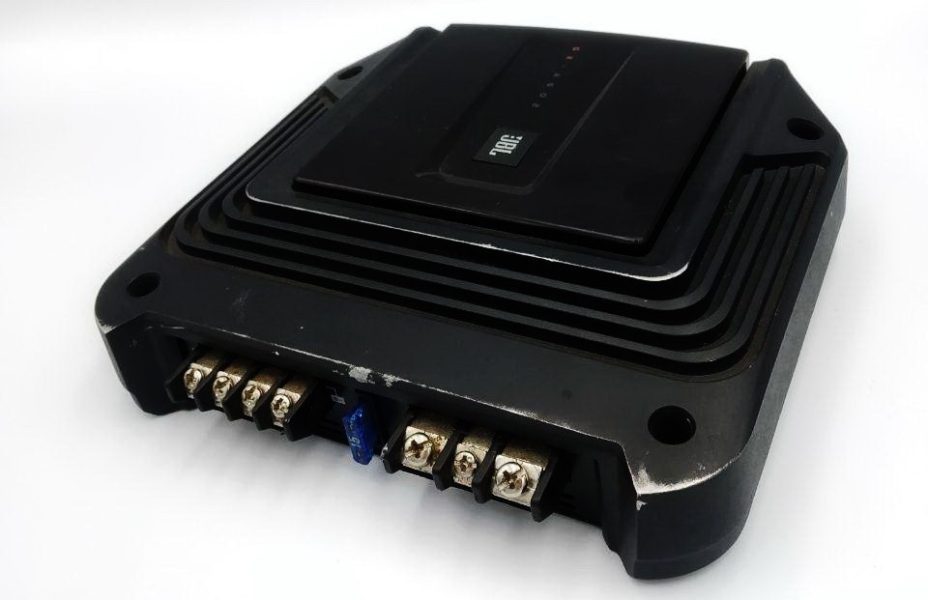

As we discussed earlier, bridging refers to a connection method that relies on two amplifier channels per subwoofer speaker. Amp models that do not support bridging are connected in a special way so that the signal from the amplifier channels is summed to the subwoofer speaker. Some speaker hookups do this by connecting signals from multiple amplifier outputs (if a dual voice coil is used in the subwoofer).
With this connection, the signal wires from the amplifier are connected to the windings of the subwoofer speaker (polarity must be observed). If there is only one subwoofer winding, then you need to purchase a special adder. With this connection, the amplifier transmits a mono signal at twice the power of the individual channel, but in this case there is no loss when performing the summation of the signal.
A more sophisticated method can be used to connect an existing subwoofer to a new amplifier. In this case, all amplifier channels work for a separate speaker system, but are summed up for the subwoofer a little later. To avoid overloading the device, it is very important that the frequency ranges of the channels do not overlap. In this case, a passive filtering device is connected to the output channel. But it is better to entrust such a connection to a professional.
Video: how to connect an amplifier with your own hands
When choosing an auto amplifier, it is necessary to take into account that additional equipment requires energy, so it is important to take care of the reliability of the battery - so that at the most inopportune moment it simply does not discharge. You can find out how to check the battery life from separate article.
For details on how to connect the amp, see the video:


Watch this video on YouTube
Questions and answers:
How to connect a 4-channel amplifier to a radio tape recorder with 1 RCA. There are two options for this layout. The first is to buy Y-splitters. This is the cheapest option, but it has several disadvantages. Firstly, it negatively affects the sound quality. Secondly, it is impossible to change the balance between the speakers using the corresponding control on the radio. This will need to be adjusted on the amplifier itself. The second method is using a two-channel amplifier, connecting to its line outputs. A two-channel amplifier is connected to the radio tape recorder, and a 4-channel amplifier is connected to it. The disadvantage of such a bundle is the same - it is impossible to adjust the balance of the front / rear speakers from the radio. Third, a processor / equalizer is installed between the head unit and the amplifier. A significant disadvantage is the high cost, as well as the complexity of the connection.
How to connect two amplifiers to a radio tape recorder with 1 RCA. The easiest way to do this is through Y-splitters. But in this case, there will be interference. The next way is the 4-channel amplifier sits on the midbass and tweeters. The 1-channel amplifier drives the rear speakers. Most often, this is the bundle that is used.
How to connect the amplifier to the head unit? First, the amplifier is connected to the car power system (positive and negative terminals of the battery). Then, using a cable, the Line-in (on the amplifier) and Line-out (on the radio) connectors are connected. Connected to the speaker amplifier.
How to connect an amplifier through a light bulb? A light in the circuit between the amplifier and the battery is needed to prevent a short circuit in the circuit. With this connection, the lamp should either light up brightly and go out, or glow dimly-dimly. This connection method is used by amateurs to do it yourself. The easiest way is to connect an amplifier with an open circuit breaker.

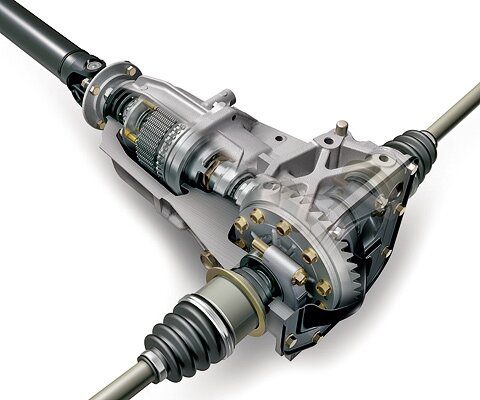
One comment
John Leonel Vasquez
I looked for how to activate this amplifier. It has three terminals, a ground, a positive 12 V, and the one that activates the unit. I didn't find how to do it, thanks.